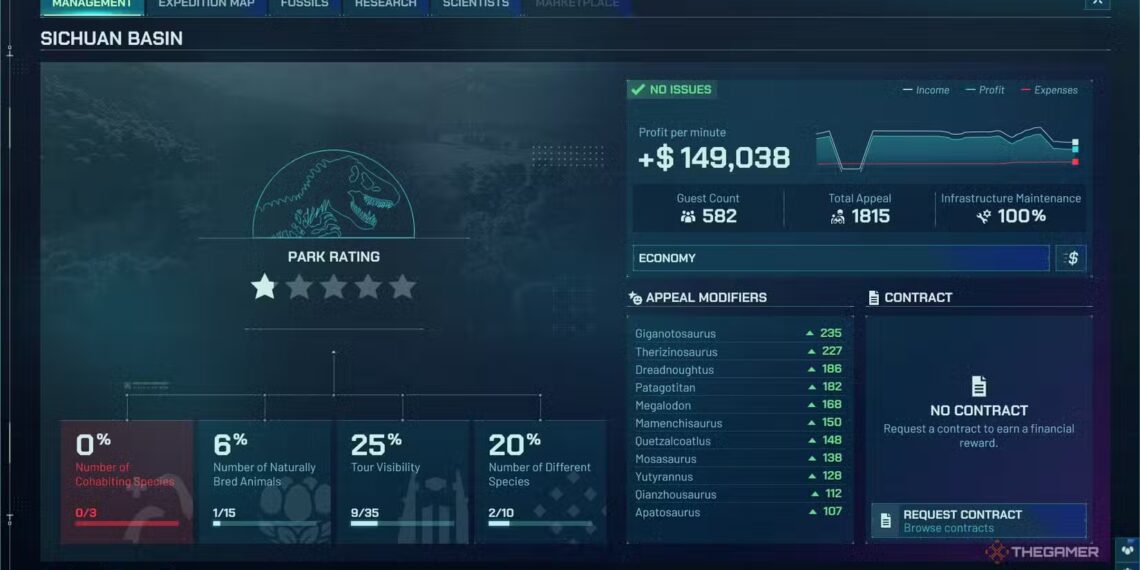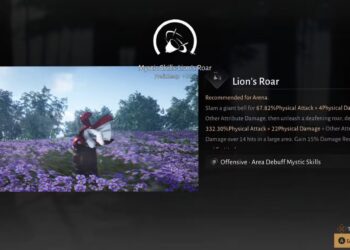Select Language:
In Jurassic World Evolution 3, your park’s success depends on how well you take care of the dinosaurs and satisfy your visitors. The quicker your park grows and improves, the better it performs, but ultimately, it’s all up to how you manage it.
A well-managed Jurassic World park has a steady income that covers maintenance costs, supports scientific research, and allows you to organize exhibitions regularly. You should aim to meet all your park’s goals to boost your rating and keep the star level you’ve earned, showing you can run a top-rated park.
To raise your park’s rating, check the current star level in the bottom right corner of your screen—white stars indicate your rating. For more details, click on the stars or go to the Control Room and select the Management tab, where your current rating and the requirements for reaching the next star are displayed.
Every park has different success measures, so it’s important to check the Management tab before deciding your priorities. Generally, your park needs a variety of exhibits with different dinosaur species, ages, and nesting. It must also be appealing to visitors in terms of entertainment, space, and facilities.
Many parks also require fulfilling contracts, maintaining high income levels, keeping the park’s upkeep in check, and ensuring dinosaur comfort. The main focus of your park—whether conservation, profit, or scientific research—will influence what areas need the most attention. Here are some specific examples:
– Montana Badlands, North America: Improve scientist skills via the Staff Center, boost income with more amenities and exhibits, and breed dinosaurs by collecting fossils and creating eggs or nesting.
– Clark County, Nevada: Increase amenities’ profits by diversifying products, build aviaries for flying reptiles, and ensure dinosaurs are comfortable.
– Kauai, Hawaii: Breed more dinosaurs naturally by creating nests, strengthen your fossils research for new species, and enhance visitor appeal with attractions.
– Sichuan Basin, China: Check dinosaur compatibility for cohabitation, breed animals from fossils, and carefully plan tours to avoid conflicts.
– Nusa Tenggara Islands, Indonesia: Upgrade genetic modifications, meet dinosaur comfort needs, and expand the diversity of your species.
– Katsuyama, Japan: Build emergency shelters for visitors, and manage non-herbivore dinosaurs, including carnivores.
– Azores Islands, Portugal: Maintain shelter coverage, release juvenile dinosaurs, and keep various dinosaur species thriving.
– Biosyn Sanctuary, Italy: Position exhibits for good visibility, ensure a healthy mix of animals, and maximize visitor attraction and park profit.
– San Albertus Island, Malta: Train scientists to improve skills, boost profits with amenities, and develop marine animal habitats.
– Malta: Focus on safety, entertainment, and habitat quality to increase guest numbers and overall success.
Each park’s success requirements are tailored to their main goals, whether conservation, profit, or research. Keeping track of these specific needs and managing your resources wisely will help improve your park’s overall rating and dominance.







